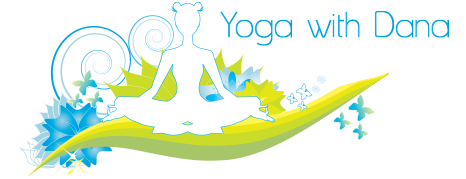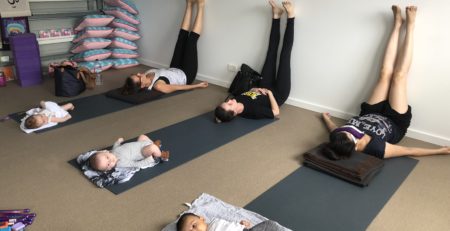Yoga Exercises to work our Core Stabilising Muscles
What are our Core Stabilising Muscles ?
Core Strengthening is essential to prevent all forms of injury around your lower back. Our core muscles include more than just our abs or tummy muscles. This picture above demonstrates the major muscles of our core which include our transverse abdominis at the front of our body, the multifidus muscle in our back. The multifidus muscle runs the whole length of the vertebral column, but is most developed in the lumbar area which play an important role to keep our spine stable & supported, hence supporting our core. Weakness in the multifidus muscle is associated with lower back pain. At the top of our core is our diaphragm. The location of our diaphragm separates our lunges from our stomach. Incorporating yogic breathing exercises into our daily life is also an important tool to help prevent lower back pain. At the base of our body are our pelvic floor muscles & these muscles represent the base of the core.
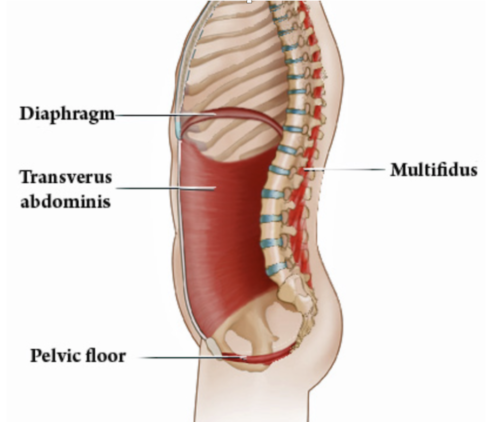
The pelvic floor muscles are the muscles you would squeeze shut to stop urinating in mid-stream, & stop yourself from passing wind. Incorporating pelvic floor exercises into your yoga practice or weekly routine is very important to help keep these muscle toned to ensure bladder & bowel control and holding these internal organs in place which also includes the uterus in woman.
A strong core is important for everyone because it helps improve your posture, prevents injuries throughout your body including your lower back, improves bladder control and provides a sense of overall wellbeing throughout your body.
The following exercises help to strengthen your Core Stabilising Muscles :
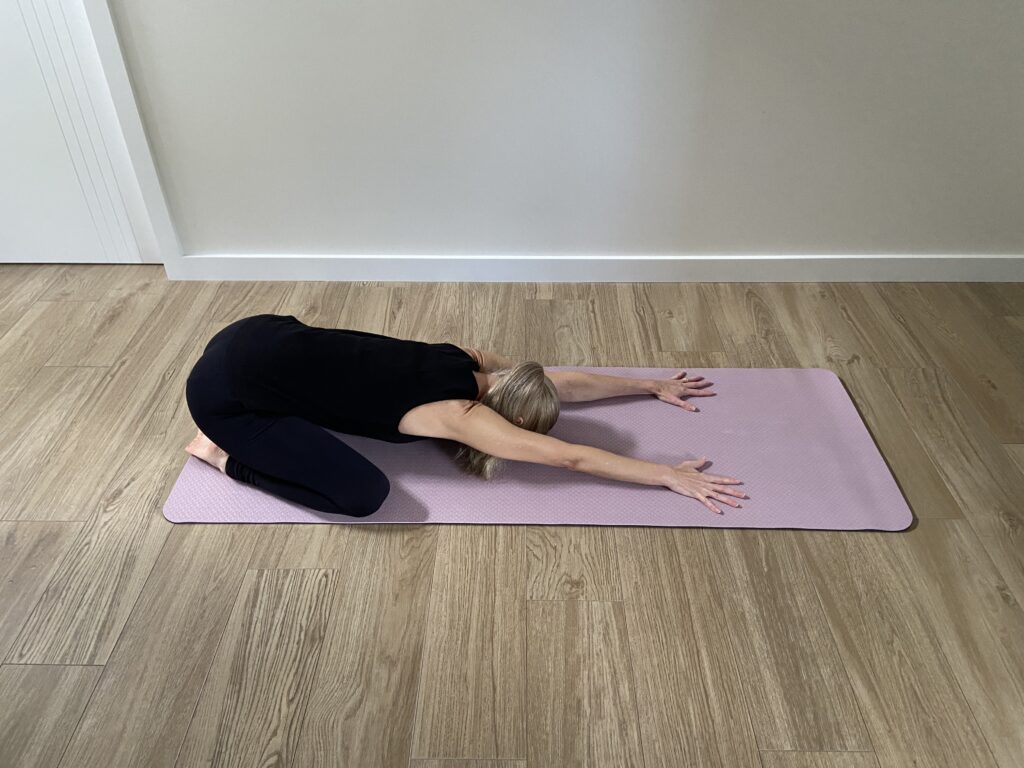
Bend & stretch forward – Utthita Balasana : A lovely way to stretch & relax in-between your core strengthening exercises. Big toes to touch, knees towards the outside of the mat. Buttocks on heels. Extend arms with straight elbows, ensure your hands, fingers & thumbs are stretching apart as much as possible. Keep walking your hands towards the top of the mat, straighten out your arms & elbows. Press hands firmly into the mat.
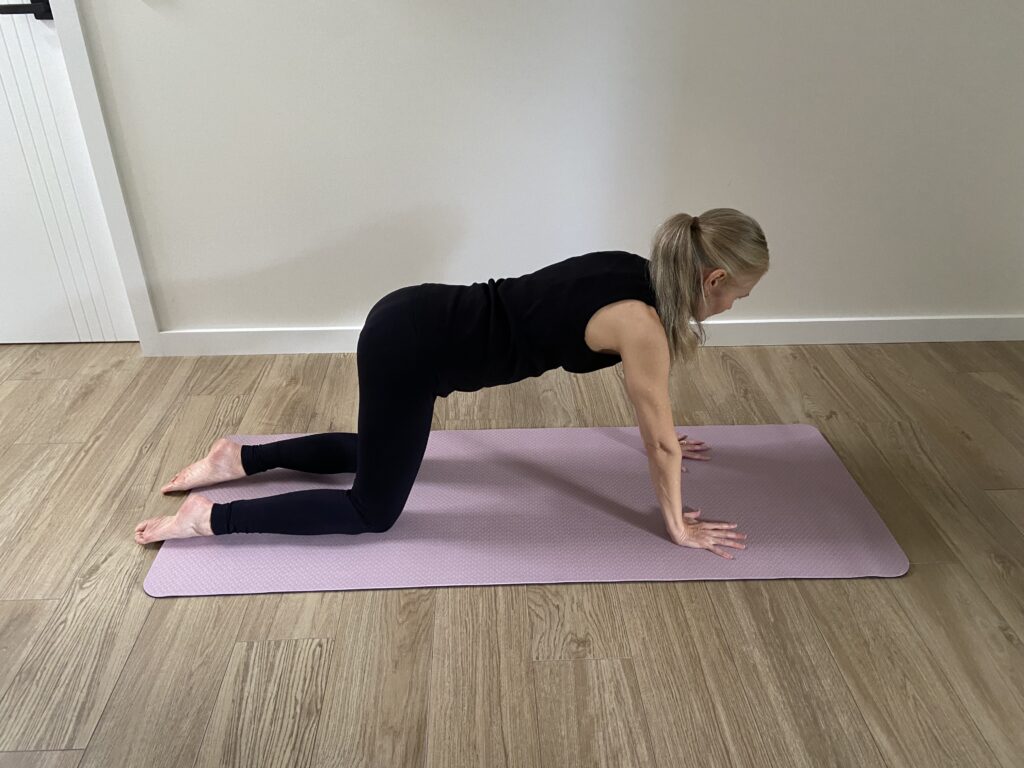
Keep pressing hands firmly into the mat & come up onto hands and knees. Keep hands exactly where they are. Your hands should be placed under your shoulders. Place your knees under your hips. Feel your spine lengthening. Eyes gazing ahead.
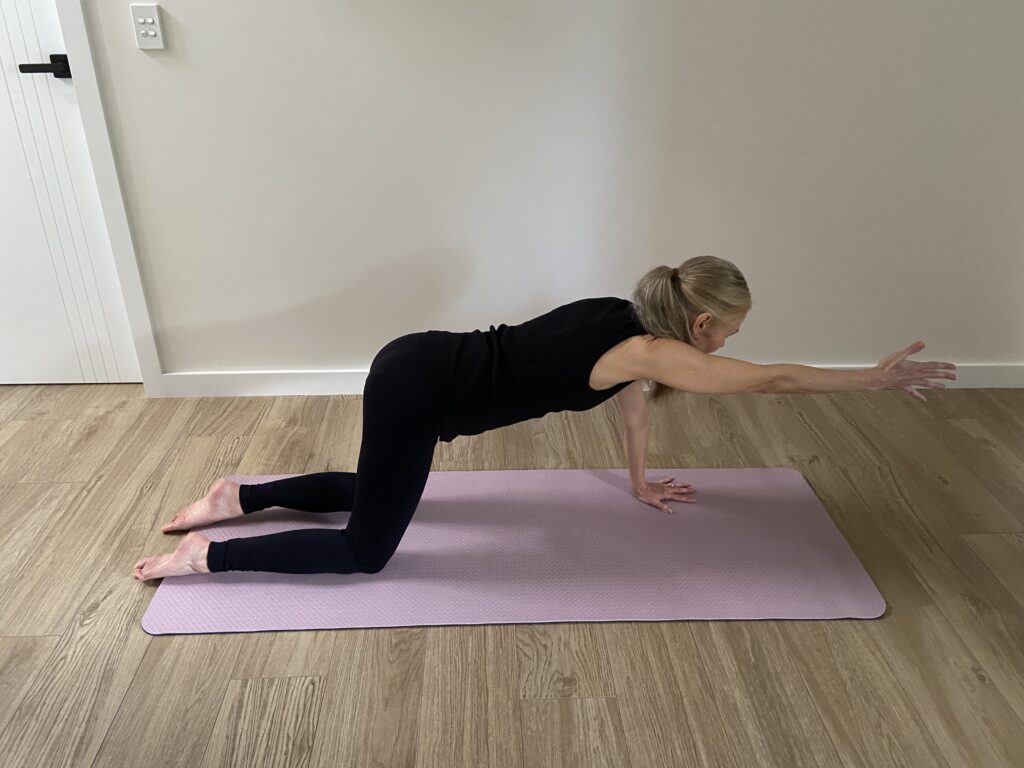
Extend your right arm out in front of your body. Thumb pointing up towards the ceiling and fingers facing forward. This is working your right side core. Hold, breath.
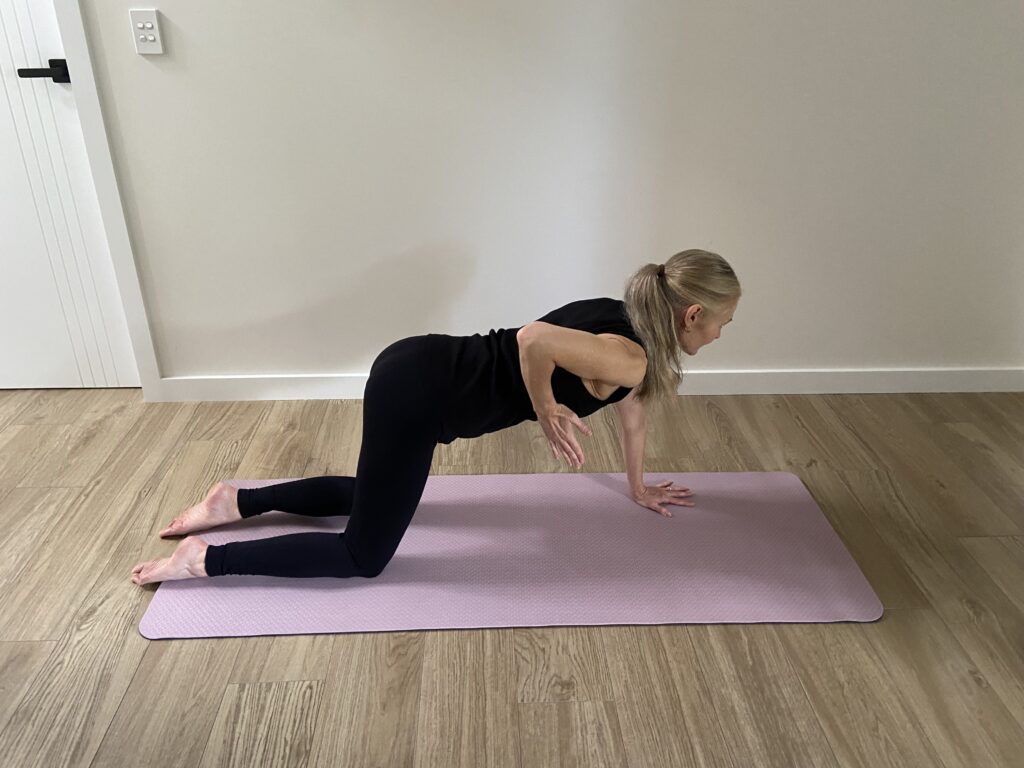
Then slowly pull your elbow in tight next to your side body. This is a tricep pull.
Repeat this exercise slowly – 5 times on the right side. Your body is still throughout your core stabilising exercises. It’s only your arm moving as your core is engaged.
Then repeat this core stabilising exercise on your left side – 5 times. These arm movements are very slow & controlled.
VARIATION : Arm outstretched on the diagonal.

Bend & stretch forward – Big toes to touch, knees towards the outside of the mat. Extend arms with straight elbows, ensure your hands, fingers & thumbs are stretching apart as much as possible. Keep walking your hands towards the top of the mat, straighten out your arms & elbows. Press hands firmly into the mat.

Your hands should be placed under your shoulders. Place your knees under your hips. Feel your spine lengthening. Eyes gazing ahead.
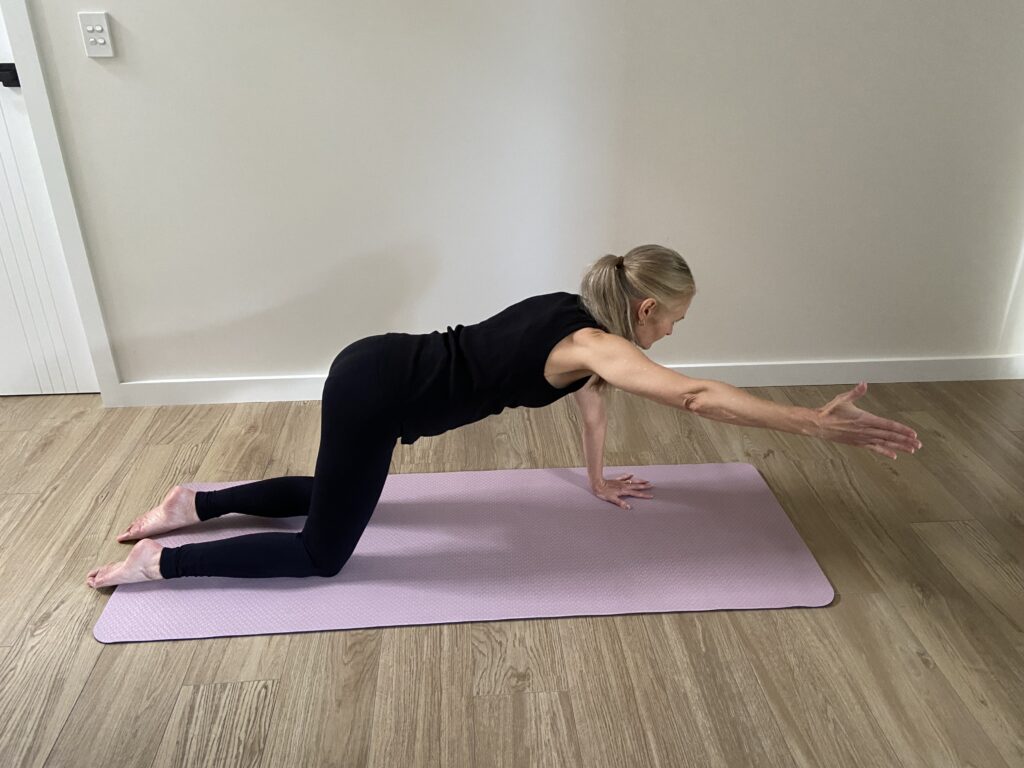
Variation : Place right hand on the diagonal. This means half way between arm being extended out in front & out to the side. The half way point is on the diagonal. Thumb pointing up towards the ceiling. Hold, breath.
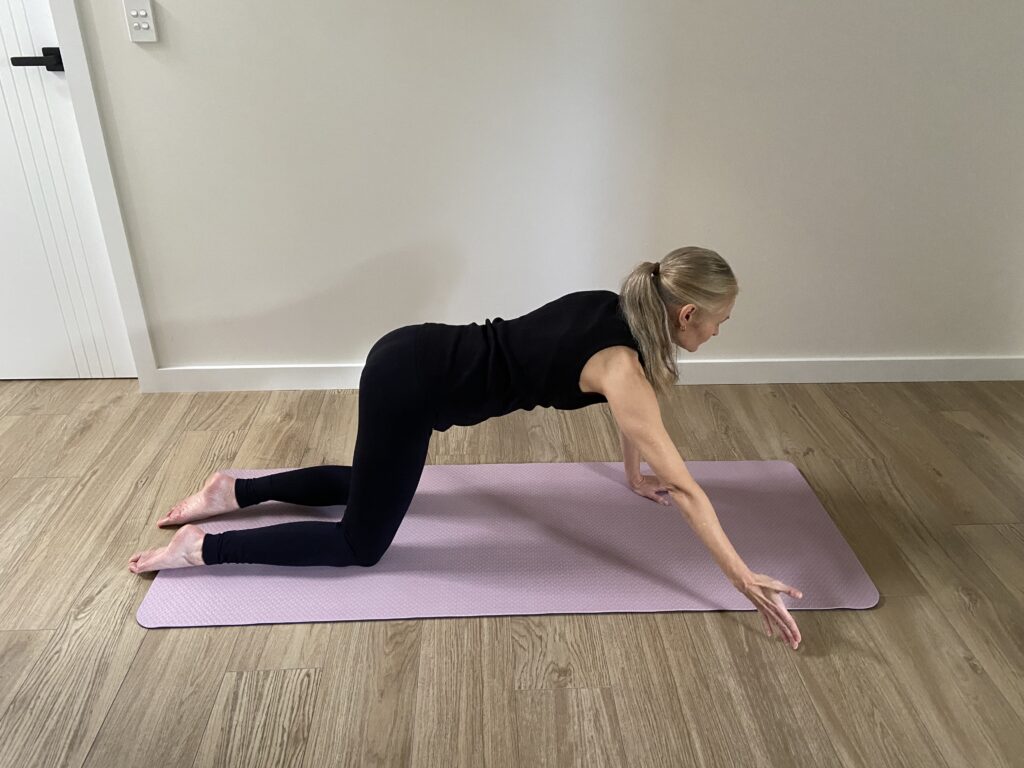
Slowly lower little finger towards the floor. Keep thumb pointing towards the ceiling. Your body is still throughout your core stabilising exercises. It’s only your arm moving as your core is engaged.
Repeat 5 times on right side.
Then repeat this core stabilising exercise on your left side – 5 times. These arm movements are very slow & controlled.
